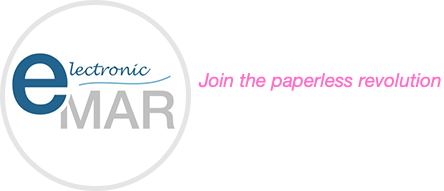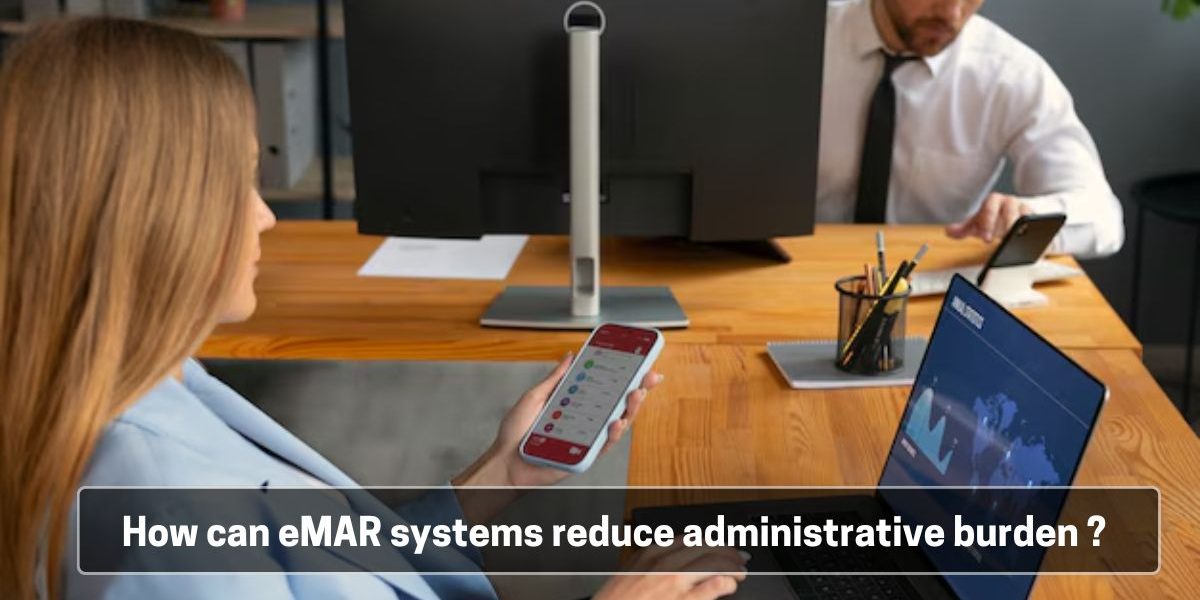Electronic Medication Administration Record (eMAR) systems play a crucial role in reducing the administrative burdens in healthcare settings. These systems streamline various processes related to medication management, leading to enhanced efficiency, accuracy, and compliance. By automating documentation, improving accuracy, streamlining communication, and saving time, eMAR systems significantly lighten the load on healthcare providers, allowing them to focus more on patient care. Here’s how eMAR systems help reduce administrative burdens:
- Automation of Documentation
One of the most significant ways electronic MAR charts reduce administrative burdens is through the automation of documentation.
Real-time recording: eMAR systems document medication administration in real-time, eliminating the need for manual entry. This automation not only speeds up the documentation process but also reduces the risk of errors associated with manual record-keeping. Nurses and healthcare providers no longer need to spend time writing down each medication administered, as the system automatically captures this information as it happens.
Standardised processes: eMAR systems ensure that records are maintained consistently according to specific protocols. By automating these processes, eMAR systems remove the variability that can occur with manual documentation. Standardisation helps to ensure that all healthcare providers follow the same procedures when recording medication administration. This consistency reduces the time spent managing and reviewing records, as there is less need to address discrepancies or non-standard entries.
- Improved Accuracy
eMAR systems significantly improve the accuracy of medication management, which in turn reduces the administrative burden on healthcare staff.
Reduction of errors: Automated data entry minimises the risk of transcription errors and medication administration mistakes. By reducing these errors, eMAR systems ensure that accurate records are maintained, leading to fewer discrepancies that need resolution later. This reduces the time and effort required to correct mistakes and ensures that healthcare providers can trust the accuracy of the information they are working with.
Barcode scanning: The integration of barcode scanning technology with eMAR systems further enhances accuracy. Each patient, medication, and healthcare provider can be assigned a unique barcode, which is scanned before administering medication. This process ensures that the right patient receives the correct medication at the correct dosage and time, without the need for manual cross-checking. By automating this verification process, eMAR systems save time and reduce the potential for human error, allowing healthcare providers to focus on more critical aspects of patient care.
- Streamlined Communication
eMAR systems also streamline communication within healthcare settings, reducing the need for manual information sharing and follow-ups.
Integrated systems: eMAR systems can seamlessly integrate with other healthcare IT systems, such as Electronic Health Records (EHR) and Pharmacy Information Systems. This integration ensures that data remains consistent across all platforms, eliminating the need for duplicate entries or manual data transfers. As a result, healthcare providers spend less time ensuring that information is correctly communicated between different systems, reducing the administrative burden of maintaining multiple records.
Automatic alerts and notifications: eMAR systems can send automatic alerts and reminders to healthcare providers about medication schedules and updates. These notifications ensure that staff are aware of important information without needing to manually track and communicate these details. For example, if a medication needs to be administered at a specific time, the system will alert the responsible nurse, reducing the risk of missed doses and the need for manual follow-up. This automation streamlines communication and ensures that all team members are on the same page.
- Time Savings
By automating and streamlining processes, eMAR systems save valuable time for healthcare providers.
Faster documentation: The automation of documentation allows nurses and healthcare providers to spend more time on direct patient care rather than administrative tasks. With eMAR, what previously took minutes to document manually can now be done in seconds.
Quick access to information: eMAR systems provide instant access to comprehensive patient medication histories and schedules. Healthcare providers no longer need to sift through paper records or search different systems for information. This instant access speeds up the decision-making process and reduces the time spent searching for necessary details, further reducing the administrative burden.
4. Enhanced Compliance and Reporting
Compliance with healthcare regulations and reporting requirements is another area where eMAR systems reduce administrative burdens.
Regulatory compliance: eMAR systems ensure that medication administration records are maintained in strict compliance with healthcare regulations. By automating compliance-related tasks, healthcare providers no longer need to manually check and double-check records to ensure they meet regulatory standards. This reduces the administrative load associated with maintaining compliance and helps avoid costly errors.
Simplified audits: eMAR systems also simplify the audit process by maintaining comprehensive and accurate electronic records. When internal or external audits are required, these records can be accessed quickly and easily, reducing the workload associated with preparing for and undergoing audits. Well-organised electronic records make it easier to demonstrate compliance and address any concerns that auditors may have, reducing the stress and time commitment involved in the audit process.
- Reduced Duplication of Work
Finally, eMAR systems reduce the duplication of work, ensuring that healthcare providers can focus on delivering quality care.
Centralised records: eMAR systems centralise medication records, eliminating the need for duplicate entries across different systems or records. This centralisation reduces redundancy and the risk of errors due to multiple entries. Healthcare providers no longer need to enter the same information in multiple places, saving time and ensuring that all records are consistent.
Workflow integration: Updates made in the eMAR system are automatically reflected across integrated systems, ensuring consistency without additional manual work. This integration streamlines workflows and reduces the administrative burden of ensuring that all systems are up-to-date, freeing healthcare providers to focus on patient care.
As healthcare continues to evolve, the adoption of eMAR systems will likely become even more widespread.







